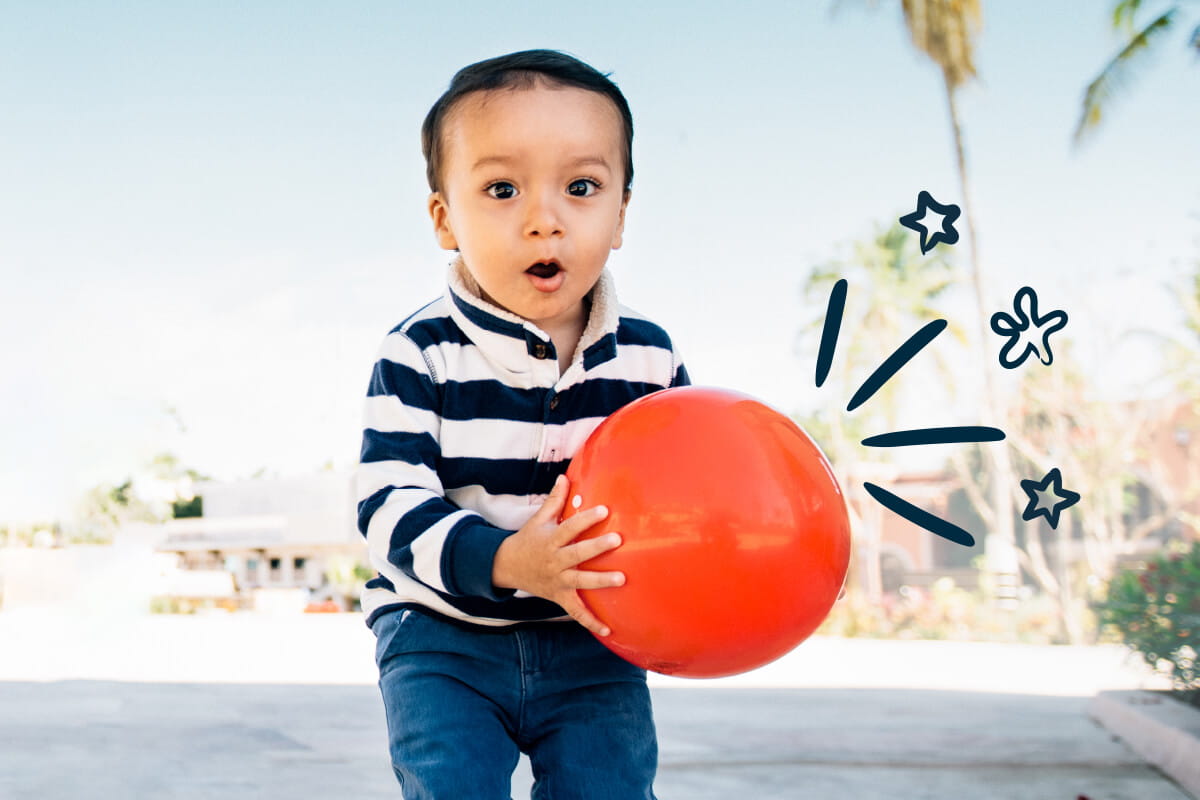Six ways to make play time learning time

Children love to play, and for good reason: It’s how they naturally learn! When kids are playing, there’s more going on than meets the eye. They’re actively involved in their learning because they’re making their own choices, discovering meaning, and building connections.
Help your child play smarter
There are six play stages that children typically progress through as they get older. However, this progression looks different for every child and sometimes children engage in multiple types of play at once, or skip stages altogether.
Within these stages, there are some easy things you can do to extend your child’s learning during play time:
Unoccupied and Solitary Play Stages (Ages 0-2 years)
Although babies don’t look like they’re playing, they’re experiencing and experimenting with their senses. As they get closer to two years old, children start to move and interact with materials on purpose, with little or no notice of other children’s actions.
1. SHOW: Show babies noisy, textured, or high-contrast items. Place them within reach and encourage your baby to reach for them and play with them as their coordination grows.
2. TELL: Describe what you see your child doing, like an announcer at a sporting event (I see you collecting all the red cars ...). Show curiosity and encourage experimentation by asking open-ended questions about what they might do next (Tell me more about where your cars are going ...).
Two-year-old children are very interested in watching others play, but they don’t usually participate. As they get closer to three, children start to incorporate what they see others doing into their own play and might even play side-by-side.
3. ENCOURAGE: Describe the play that your child is paying attention to and ask questions or make suggestions that encourage them to try it out for themselves (Those children are doing a puzzle—they fit the pieces together to make a picture. Do you see a piece that might fit?)
4. ASK: Offer enough space and materials for children to experiment or share if they’re playing with others. Ask questions to encourage them to try new ways of using things (I wonder what would happen if …).
Three-year-old children continue to play (mostly) independently, but sometimes react to what others are doing. As they get closer to four years old, all stages converge as children put all their skills into action and play together with a common goal or purpose.
5. FLEX: Make small changes to the play space or show children a different way of using materials to encourage them to notice and respond. If they’re playing in a group, call attention to the changes or actions of other children to encourage the same kind of response and interaction (Look at how this child is using the blanket to make a cape for the doll. What else can you use to dress up?).
6. PRAISE: Help your child practice social skills like sharing, taking turns, or helping a peer during play. Offer praise when you notice them working on these skills. (Wow, it’s so nice to see you sharing with your friend while you play. Now both of you are having so much fun!)
Keep in mind that play time is most meaningful when it’s authentic—not through a contrived experience. So, the next time your child simply chooses to play all day (and you worry about what they could possibly be learning), remember: Play is powerful!

Looking for new playroom inspiration? Visit IKEA for children’s furniture, toys, and more!
Whether you’re at home or looking for care, KinderCare is here for you.




.jpg?la=en&h=800&w=1200&hash=799F5BD6E84A71FB0D1C8E657FE7F226)
